Thank you for visiting! By the way… any links on this page that lead to products on Amazon and other stores/partners are affiliate links Aquarium Store Depot earns a commission if you make a purchase.
Maintaining a healthy aquarium is all about recreating the natural habitat of your fish, and temperature is one of the most important parameters. But how do you know which temperature to choose? And how do you keep your water at the right temperature all through the year?
This article covers everything you need to know about aquarium temperature control, so let’s dive right in!
Aquarium Water Temperature – Why it Matters
Fish are cold-blooded animals1, which means they are directly affected by the water temperature. Unlike birds and mammals (like ourselves), fish can’t regulate their own body temperature, and they can’t crawl under a blanket either! Check out our video from our YouTube Channel that you can follow along with this blog!
So what happens when the water gets a little too cold or warm?
Well, if it gets really hot or really cold, your fish aren’t going to survive. However, keeping your fish even a little outside of their proper temperature range can have serious health impacts in the long run.
Incorrect water temperatures cause stress and affect your fish’s immune system, leaving them wide open to a whole range of health ailments – fungal, bacterial, and parasitic infections. Unhealthy tank temperatures aren’t only dangerous for your fish. Inverts like shrimp, snails and aquatic plants also have preferred temperature ranges to consider.
And then there are the organisms that we can’t even see. The beneficial bacteria that live in our aquariums are also sensitive to high temperatures, and without them, the nitrogen cycle can fail and cause serious water quality issues.
Choosing the Right Temp for Your Fish
Before you buy any fresh or saltwater fish, be sure to research its temperature requirements and make sure you will be able to maintain that temperature range.
Each fish species can survive in a range of temperatures, but it’s usually safest to aim for the middle of the range if you’re going to be maintaining a stable temperature.
Matching Tankmates
So, aquarists need to maintain a stable water temperature or a suitable temperature range that matches the needs of their specific fish species. But what happens when you keep a community setup with more than one species?
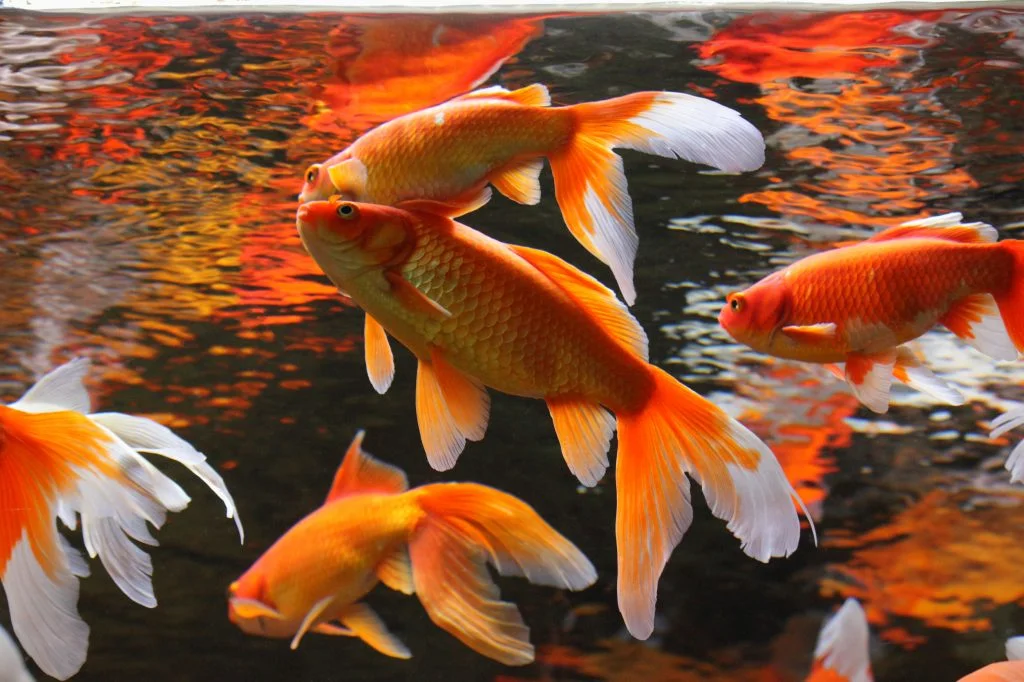
Well, it’s vitally important that each fish species you keep is comfortable in the same temperatures. Ideally, you should be choosing tank mates from a similar natural habitat, but at the very least their upper and lower temperature limits should be pretty similar.
You don’t want a situation where one or more of your fish are always uncomfortable like in the following example:
From a temperature perspective alone, a goldfish can live in temperatures between 65 and 72 degrees Fahrenheit, and a cockatoo cichlid can survive in 72 – 84 degrees Fahrenheit, but that doesn’t mean you should keep the two species together at 72°F since they will both be right on the limit, and a small swing either way could be dangerous. Note this example is temperature only. There are other factors to consider like temperament, pH, and hardness preference of these fish.
Stable vs. Fluctuating temps – Which is Best?
So we know that each fish species prefers a certain temperature range, but should we aim to maintain a specific happy middle ground, or let the water warm and cool slightly? Gradual warming and cooling through the day is perfectly natural as long as the temperatures stay within a safe range, but you want to avoid frequent and rapid water changes.
You see, water temperature varies in nature, slowly with the seasons, and quickly during storms and hot weather. However, changes happen much slower in large bodies of water, and wild fish have the freedom to move to areas where the water is warmer or cooler. In the ocean, water stability is more critical as a degree or two change can have drastic changes to corals and fish2.
If you keep your home warm all year, or you live in a tropical environment, you probably won’t need a heater (more on this later), and you can allow your water temperature to fluctuate if it stays within a safe range.
However, if you need to use a heater (as many folks do), it’s best to maintain a stable temperature throughout the year and only raise or lower it if you have a specific goal like treating an infection or breeding your fish.
Suggested Ranges for Different Fish
Now that you know a little more about aquarium temperature and why it’s so important, let’s take a look at some recommended temperature ranges for different aquarium setups. These are general guidelines, but remember to research each fish species needs before choosing a specific temperature.
Cold Water Fish
While most of the popular aquarium fish come from warm and tropical parts of the world, some well-known fish actually prefer it a little cooler. Coldwater fish are generally comfortable in water temperatures below 70 °F, and some are even happy below 60 degrees fahrenheit.
A very peaceful fish that does well in coldwater fish. Other minnow varieties are also available
Here are a few examples of coldwater fish and their preferred temperature range:
- Goldfish: 65 – 72°F
- Ricefish: 64 – 71°F
- White Cloud Mountain Minnows: 58 – 72°F
Check out our guide to 20 great cold water aquarium fish for more examples!
Tropical Fish
Most aquarium fish are tropical species that come from natural habitats near the Earth’s equator. The temperatures are generally warm to hot in these regions, and the seasons don’t change too much, so temperatures are relatively stable.
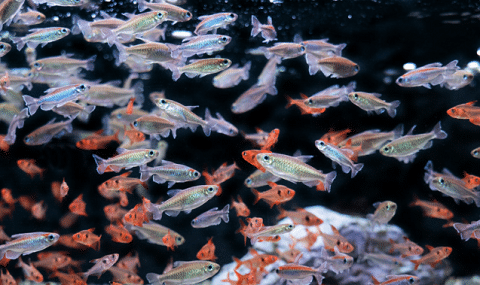
Ideal temperatures for tropical fish vary between the species, but most fish will thrive at 75 to 80 degrees Fahrenheit. However, some fish enjoy even warmer water.
Here are a few examples of ‘hot’ water fish and their preferred temperature range:
- Discus fish: 82 – 86°F
- Rams: 78 – 85°F
- Apistogrammas: 72 – 84°F
Reef Tanks
Tropical reefs are warm water environments, and that means most aquarists will need to run a heater in their reef tanks to keep the temperature in the safe range. Water temperatures fluctuate in the ocean too, but not as quickly or as dramatically as they can in a glass aquarium.
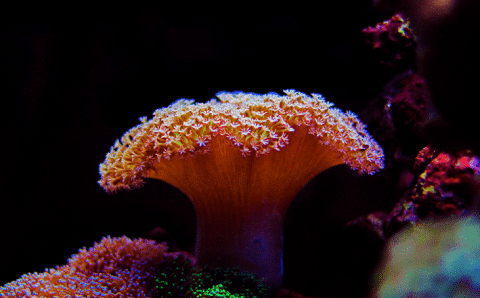
Corals are heat-sensitive organisms that are most comfortable between about 73 and 84 degrees Fahrenheit, and most aquarists agree that ideal reef tank temperatures range between about 73 and 80°F, with the ideal temperature right around 78 degrees Fahrenheit.
Other Common Setups
I’m going to list a few other popular tank setups and ranges for your reference. We have links in this section to their respective overview pages.
Use Coupon Code ASDFISH at Checkout
Betta Fish are one of the most beautiful varieties of freshwater fish available in the hobby. Easy to care for with plenty of varieties!
- Betta fish tanks: 75 – 80°F
- African cichlid tanks: 74 – 80°F
- Brackish tanks: 75 – 80°F
- Axolotl tanks: 59 – 65°F
- Shrimp tanks: 65 – 84°F (Neocaridina), 64 – 76°F (Caridina)
Adjusting Your Aquarium Temperature
In a perfect world, the water in our fish tanks would remain within the same range as our aquatic pets’ natural habitat without any adjustments, but that just isn’t always the case. Fortunately, providing warmer or cooler water is possible with the right techniques and equipment.
However, before we discuss techniques for increasing and decreasing water temperature, it’s important to mention again that adjustments must be made slowly and carefully. Dramatic changes in water temperatures will cause shock and might even kill your aquatic pets.
Heating The Water
Aquarium heaters are simple devices that warm the water in aquariums and maintain a specific stable temperature for tropical fish. Read on to learn whether you need an aquarium heater and how to use these life-saving tools.
Do you need a heater?
Cold-water fish usually do not require a heater if kept indoors, but you should monitor their water temperature anyway to stay on the safe side.
It is possible to maintain warm water for tropical fish without using a heater IF you maintain warm temperatures in your home. Your lighting and other equipment may even provide enough heat, even if your home is a little on the cool side.
However, if you’re just getting started and you’re not exactly sure how the temperature changes in your home through the year, it’s going to be safer to pick up a heater rather than experiment with fish already in your tank.
Remember- Just because your aquarium fish might survive temperatures outside of their preferred range doesn’t mean it’s good for them in the long run.
Choosing A Heater
Aquarium heaters are sized according to their wattage. In most cases, 5 watts per gallon is going to be adequate, and you can go down to about 3 watts per gallon on larger aquariums over 60 gallons where the water temperature remains more stable. You may need to use more than one heater in a large aquarium, and this has the benefit of creating a more even temperature distribution.
Best Value
Very accurate, durable, and German made. A great value buy for any aquarium
Most aquarium heaters work on a built-in thermostat, so a heater that is slightly too large for your tank is not going to make the water too hot, although it may warm your water too quickly. However, a heater that is too small for your aquarium volume is not going to cope in a cold room.
Here are a few examples of suggested minimum heater sizes for various tropical fish tanks:
- 5-gallon tank: 25 – 50 watts
- 10-gallon tank: 50 – 100 watts
- 29-gallon tank: 100 – 150 watts
- 55-gallon tank: 150 – 200 watts
These are suggested minimum wattages, but you might need to go bigger if your home is very very cold.
Using A Heater
There are various aquarium heater designs on the market, so it’s best to follow the specific instructions of whichever product you choose to buy. However, there are some general guidelines that you should take note of.
Aquarium heaters use thermostats that tell them when to kick on and off to maintain your desired tank temperature. This means you need to adjust your heater to the temperature your fish need and then leave it powered on permanently.
Position your heater near a source of water flow in the fish tank to distribute the warmth evenly. Heaters are not the prettiest devices, so I recommend the back of the aquarium where you can hide your hardware with hardscape, ornaments, or plants.
Heaters are supposed to last several years, although it’s wise to keep a spare, especially if your home is not heated and you don’t live near a fish or pet store. As a best practice, it is best to replace your heater once a year as they have a record of failing. Installing a heater controller will provide the most assurance.
Protect your investment with this heater controller. An excellent choice for small tanks. WiFi models now available!
Circulation & Oxygenation
Warm water holds less oxygen than cool water, so increasing the flow and oxygenation in your aquarium can have great benefits for your tropical fish. A small powerhead and an airstone can distribute the heat, break up the water’s surface, and dissolve more oxygen into the water.
Adequate water circulation in your aquarium will ensure stable water temperatures throughout your fish tank, just remember that power heads and pumps will give off some heat.
Cooling your Tank
Warming the water temperature in your aquarium is easy. All you need is a good quality heater, plugged into a reliable power source, and an accurate thermometer to keep an eye on and you’re all set. But what do you do if your water is too warm?
Well, cooling your fish tank can be a little more complicated, but there are many proven methods to choose from. Let’s take a look at some effective options:
Use Minimal Equipment
All internal aquarium hardware that uses electricity gives off some heat. Minimizing your equipment and choosing low energy alternatives are great ways to keep things cool.
LED aquarium lighting is the best choice if your fish tank is running too warm. LED technology runs cooler than traditional fluorescent and incandescent lights, and it uses less power and lasts longer too.
Powerfilters create heat too, so consider a sponge filter to save a few degrees. Air-powered filters do not increase water temperature and can even help to cool the tank by surface agitation and evaporative cooling. Running an airstone has the same effect, and has the added benefit of increasing aeration for your fish.
Create a Cool Environment
An aquarium in a hot room will naturally warm up to match the surrounding air. Keep your fish tanks in a cool space like the basement or in a room on the north side of your house where the walls don’t get direct sunlight.
You should also move your aquarium away from sources of heat like computers, refrigerators, and stovetops. Air conditioning the room is highly effective, but cranking up the AC will crank up your utility bills too, so keep that in mind.
Evaporative Cooling
It’s possible to cool your aquarium by running a small fan on the water’s surface. You can even set your fan on a timer, for the late afternoon when it gets the warmest or even wire it to a thermostat if you’re handy.
Aquarium cooling fans are cheap and effective ways of pushing heat away from the aquarium
You’ll need to remove the hood of your tank to allow for airflow and the best option is to cover your aquarium with a fine mesh. That way some water can evaporate and heat can escape your tank.
You could go without the mesh, but then you run the risk of fish jumping out of your tank, and you’d be surprised how well fish can jump! One way of minimizing the risk is to drop your water level by a few inches.
Evaporative cooling will increase humidity around your tank, which is great for houseplants, but not ideal for electronics. Cooling your aquarium with evaporation also means you’re going to need to top up your tank more often. This is pretty straightforward in a freshwater setup, but it will cause salinity fluctuations in a reef tank (unless you implement an auto top off system).
Cooling with Ice
You could also cool your aquarium with ice or cold water in a pinch, but this method is time-consuming, difficult to manage, and has more risks for your fish. One way to do this effectively is to freeze a couple of soda bottles full of water and float them in your tank when necessary.
Use a Chiller
The most effective method of cooling your aquarium water is to use a purpose-made aquarium chiller. These devices refrigerate the water as it flows through them, effectively cooling it to your desired tank temperature. Chillers aren’t cheap, but they are adjustable and provide much better fish tank temperature control than some of the other DIY options.
Editor's Choice
The name brand in aquarium chillers. The JBJ Arctica efficiently keeps tanks cool and are quiet
Monitoring
Aquarium heater temperature adjustment systems can be pretty inaccurate, so a good quality thermometer is your safest bet for monitoring your tank temperature.
There are many designs available in the hobby including old-school floating glass thermometers, stick-on-the-glass designs, systems with submersible probes and LCD screens, and even infrared guns.
Choose a design that’s easy to read and compare it with others in the shop or test it against a friend’s thermometer to confirm its accuracy if you can.
FAQs
How cold is too cold for an aquarium?
Your aquarium is too cold if your thermometer reads below the minimum temperature range of the fish you keep. Fish in general do take cooler water better than water that is too warm, however, long term exposure will cause harm and your fish may not survive. Some cool water fish like goldfish can survive without heaters in cool indoor temperatures.
How warm is too warm for an aquarium?
Most tropical fish can survive in water up to about 80 degrees Fahrenheit. There are some fish that can handle 82-86°F. However, every fish species will have difference needs. This is why you should research the various care requirements of the fish you are looking to purchase.
Is 82 degrees too hot for aquarium?
Most cold water and temperate fish will be stressed when their tank’s temperature reaches 82 degrees Fahrenheit. However, some tropical fish thrive at this temperature, and most species will survive for some time. However, most aquarium fish require slightly cooler water for long-term health.
How do I know if my aquarium is too warm?
At higher temperatures, fish will usually show signs of hypoxia (suffocation) by reduced activity levels and rapid breathing at the water surface or the bottom of the tank. However, monitoring your tank’s temperature with a thermometer is the most reliable way to safeguard fish health.
What is the best temperature for a freshwater fish tank?
Each fish species has its own ideal temperature range, so there is no single best temperature. However, a temperature of about 77 degrees Fahrenheit is suitable for most tropical fresh and saltwater fish.
Final Thoughts
Fish tank temperature control is one of the most important factors to be successful in the aquarium hobby. The take-home message is that you don’t have to keep your tank perfectly stable at a specific water temp, but stick within your pet’s ideal temperature range to keep your fish healthy in the long run.
I hope this article has been helpful to you and your fish tank, and feel free to share your aquarium water temp tricks in the comments below!
- About the Author
- Latest Posts
I’m thrilled that you found Aquarium Store Depot! Here you’ll find information on fish, aquariums, and all things aquatics related. I’m a hobbyist (being doing this since I was 11) and here to help other hobbyists thrive with their aquariums! I adhere to a high quality Editorial Process and Review products with real life field usage and practical analysis.



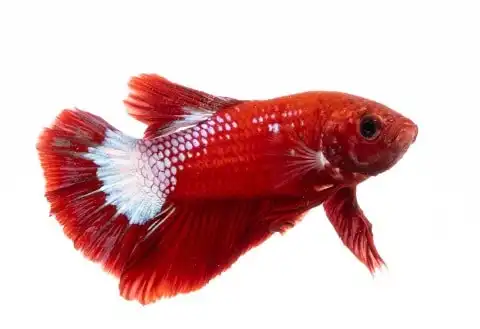

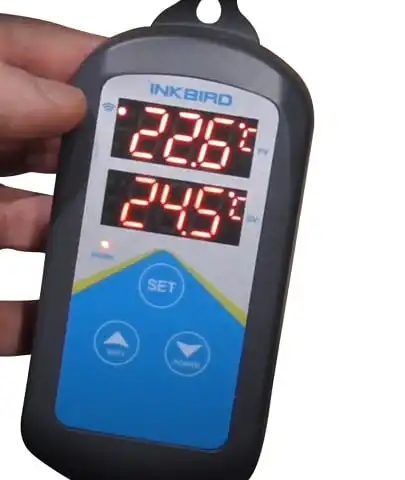
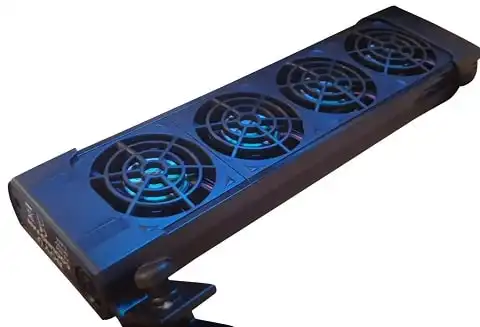
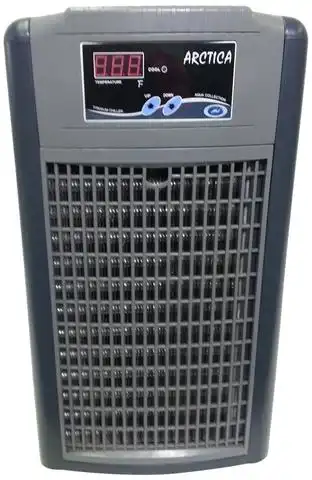




Goldfish can survive anything from near-freezing to almost 30°C.
In my opinion, this detailed guide on maintaining the correct temperature for various types of fish tanks is both insightful and practical. It seems to me that you’ve addressed every major consideration with clarity, from the significance of water temperature for different species to tips on choosing the right heater for the aquarium size. The examples of specific temperature ranges for different species are especially useful, as they provide a concrete reference for aquarists.
Moreover, your emphasis on stable vs. fluctuating temperatures and the dangers of rapid changes is a vital reminder. It is commendable how you’ve pointed out the impact of temperature not just on the fish, but also on the other tank inhabitants like the invertebrates and the beneficial bacteria.
The section on how to properly use a heater is informative, making it accessible for beginners.
Lastly, your reminder to adjust the temperature slowly to avoid shock is an important safety tip that can’t be overstated.
Overall, your work is a valuable resource that should help anyone, from beginner to experienced aquarists, provide a healthier environment for their fish. Excellent job!